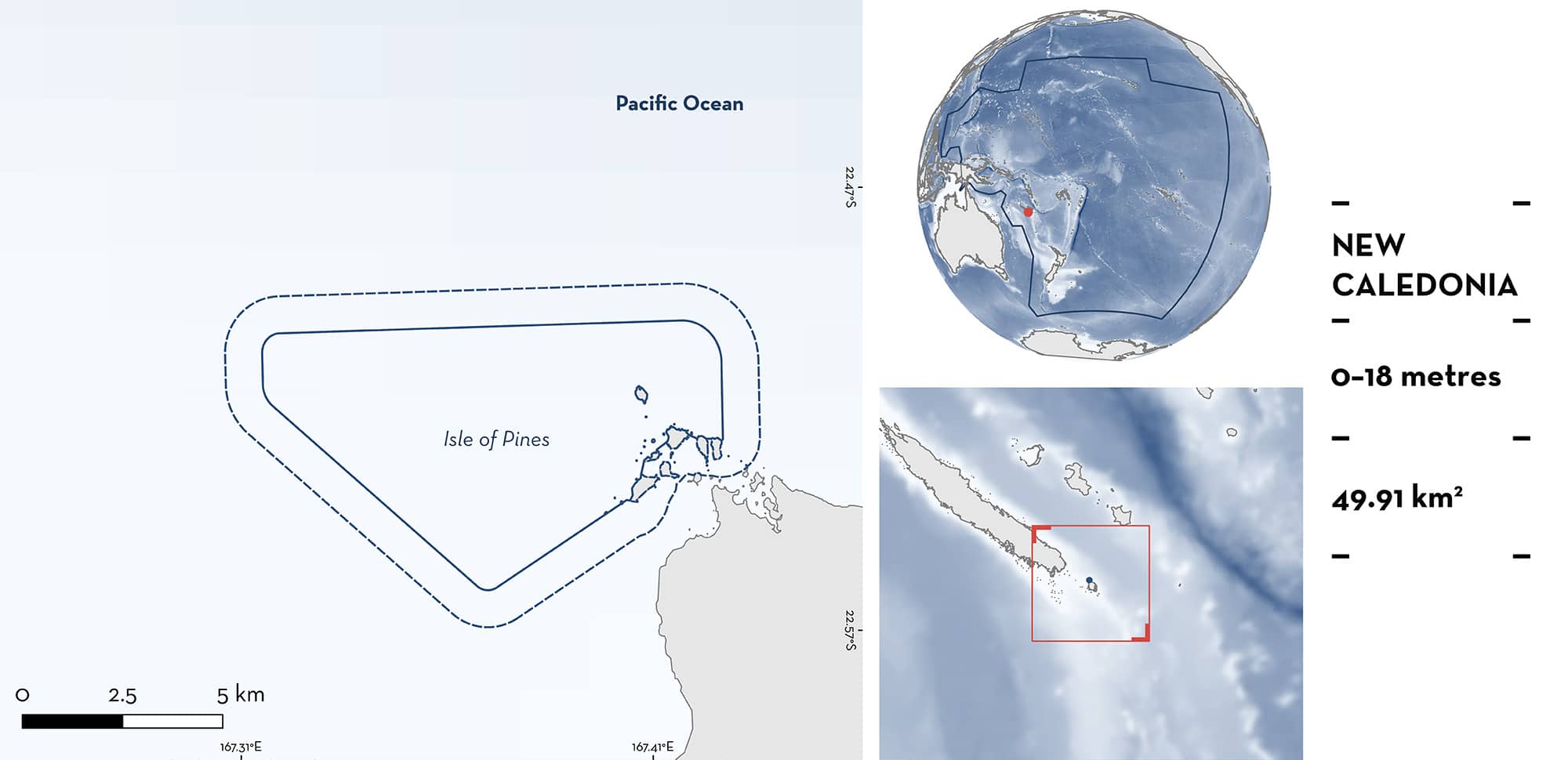ISRA FACTSHEETS
ISRA FACTSHEETS
NEW ZEALAND & PACIFIC ISLANDS REGION
Isle of Pines
Summary
Isle of Pines is located on the northern tip of the Isle of Pines in New Caledonia. The area is characterised by reef walls and a ledge with some sandy areas at 18 m depth. It is influenced by mostly mild currents compared to adjacent areas. The area overlaps with the Bassin des Loyauté Key Biodiversity Area (KBA 2024). Within this area there are: threatened species and resting areas (Whitetip Reef Shark Triaenodon obesus).
Download factsheet
Isle of Pines
DESCRIPTION OF HABITAT
Isle of Pines is located on the northern tip of the Isle of Pines in New Caledonia. The area is characterised by rocky formations which create caves, ledges that offer shelter from currents. It is also characterised by coral reef walls covered with diverse hard and soft corals and a ledge in 18 m depth with rocky, sandy, and muddy substrates (PE Faivre pers. obs. 2024). The area encompasses drift dive sites. It is influenced by tidal currents and underwater visibility is generally very good (PE Faivre pers. obs. 2024).
The area overlaps with the Bassin des Loyauté Key Biodiversity Area (KBA 2024).
This Important Shark and Ray Area is benthic and pelagic and is delineated from surface waters (0 m) to 18 m based on the observations of Qualifying Species and the bathymetry of the area.
CRITERION A
VULNERABILITY
One Qualifying Species considered threatened with extinction according to the IUCN Red List of Threatened Species regularly occurs in the area. This is the Vulnerable Whitetip Reef Shark (Simpfendorfer et al. 2020).
CRITERION C
SUB-CRITERION C3 – RESTING AREAS
Isle of Pines is an important resting area for one shark species
Whitetip Reef Sharks are regularly seen resting in this area (PE Faivre pers. obs. 2024). They are observed on a small ledge at 18 m depth and on sandy substrate between steeper rock formations. An average of 2–5 individuals are observed resting together and reportedly use this area to avoid the high currents that characterise adjacent sites (PE Faivre pers. obs. 2024). This species is observed resting at different sites within this area for shelter from currents – moving from locations with a receding tide during slack tide periods to locations with an incoming tide. In this area, Whitetip Reef Sharks quickly return to the same resting locations after any disturbance. Visually estimated, small Whitetip Reef Sharks (<100 cm total length) are observed resting under coral ledges or in small caves between 10–15 m depth: in the lagoon or on the top of barrier and fringing reefs. This area is frequently (~twice daily) visited by divers, and resting Whitetip Reef Sharks are seen ~80% of the time. Observations are reported year-round, with dives made in 2019 (n = 700), 2020 (n = 650), 2021 (n = 550), 2022 (n = 600), 2023 (n = 700), and 2024 (n = 300). This species is observed outside of the area by recreational divers however, this area has the most regular and predictable sightings and the highest number of resting Whitetip Reef Sharks (PE Faivre pers. obs. 2024).
Download factsheet
SUBMIT A REQUEST
ISRA SPATIAL LAYER REQUEST
To make a request to download the ISRA Layer in either a GIS compatible Shapefile (.shp) or Google Earth compatible Keyhole Markup Language Zipped file (.kmz) please complete the following form. We will review your request and send the download details to you. We will endeavor to send you the requested files as soon as we can. However, please note that this is not an automated process, and before requests are responded to, they undergo internal review and authorization. As such, requests normally take 5–10 working days to process.
Should you have questions about the data or process, please do not hesitate to contact us.


